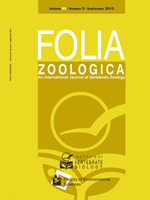Primates are amongst the most charismatic and renowned mammals to the general public. From lemurs to gorillas, they have been the subjects of countless representations, and models to elucidate many questions about evolution, ecology and behaviour.
In the third volume of this exciting encyclopaedia the editors explore the great diversity of the primate order. Its main goal is to stimulate not only the interest in primates but also to raise awareness for their conservation, and for that purpose counted with the participation of 57 primate specialists. According to Russell Mittermeier, this volume is targeted to: “First, serve as a reference for students and researchers that should be of value for many decades to come. Second, it should help to stimulate public interest in these wonderful animals. Third, and probably most important, it serves as the raw material for the production of many new regional, national and local field guides to help stimulate the growing hobby of “primate ecotourism” (Mittermeier 2013).
Astonishing high quality pictures and superb illustrations done by Stephen Nash are intersected within the text in a fashionable and appellative manner. The taxonomy is accurate and up-to-date including the two monkeys, which belong to the Cercopithecidae Family, recently discovered in Africa: the kipunji (Rungwecebus kipunji) and the lesula (Cercopithecus lomaniensis), as well as the Roosmalens' dwarf marmoset (Callibella humilis) from the Central Amazon. However, most likely due to edition deadlines, the recent discoveries of the only venomous primate in the world, the Bornean slow loris (Nycticebus kayan) (Munds et al. 2013), and the Lavasoa dwarf lemur (Cheirogaleus lavasoensis) (Thiele et al. 2013) were not included.
On the introductory section the scene is set up by presenting a review of previous primate taxonomy reference works; a brief explanation of how the idea of creating the book emerged; the relevance of the primate studies; primates in numbers, as well as a brief analysis of the major threatening factors that are affecting primate survival and how the book is organized providing a quick summary for each primate family. A combination of morphology and phylogenetic studies were consulted and incorporated in order to elucidate the relationships among genera and species. A classical primatological division of prosimians, monkeys and apes was adopted to describe and present each family with the respective taxa associated, reflecting also an implicit evolutionary timeline where the former were more distant and the latter more close to humans.
On the second part of the book, aspects such as: socioecology, general habits, behaviour, communication, breeding, relationship with humans, distribution, and conservation status among others, contribute to the characterization of each family and species. We highly appreciate inclusion of the sections focused on relationship with humans as half of primate species are threatened, primarily due to hunting and destruction of their habitats.
Nevertheless, three drawbacks can be pointed out. The first is connected with the languages used for the common nomenclature of the species. Besides English, only French, German and Spanish were used. Being Brazil, for example the country that harbours more primate species (i.e. 116) than anywhere else, the use of Portuguese is justifiable per se. The second critic that can be noticed is the total omission of the human species in the present volume. This aspect was clearly an option of the editors and they justify it by arguing that “Given that we would need volumes to describe the amazing behavioural, ecological, cultural and technological diversity of our own species, we have decided to exclude it from this volume, and to focus instead only on the non-human members of the order of which we are a part.” (p.24). It is a fact that if all human facets will be included the extension of the volume will be ridiculously large. So why not just name the volume Non-Human Primates instead? Moreover, if one of the objectives of the book was to raise awareness concerning primate conservation, some human characteristics could be included (e.g. demography, land use and forest loss caused by human activities, bushmeat traffic, etc.). By excluding humans the speciesist idea that our species is “superior” is maintained or that humans are apart in the sociozoological scale is reinforced. To move forward in primate conservation this idea must also be deconstructed, and put into perspective when the objective is revising the primate order. Finally, considering the fact, that infectious diseases and pathogen transmission are considered an important risk factor to primate conservation efforts, little attention was given to this problem within the parts about conservation and relationship to humans, especially in great apes.
Overall, this volume is an invaluable reference work that needs certainly to be included in the bookshelf of researchers, teachers, and primate lovers, but also on conservation NGO's and decision maker's libraries.





